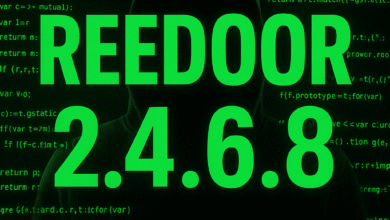Unlocking the Mystery of Jiflbdnvw4p: Everything You Need to Know

Introduction to Jiflbdnvw4p
Unlocking the Mystery of Jiflbdnvw4p If you’ve stumbled upon the term jiflbdnvw4p, chances are you’re scratching your head wondering what it really means. At first glance, it looks like a random string of letters and numbers, something you’d expect from a password generator or a tech prototype code. However, like most unusual terms, it sparks curiosity. The interesting part about jiflbdnvw4p is that it can be explored from multiple perspectives—technology, digital culture, branding, or even cryptography.
The digital era is full of strange codes, terms, and identifiers that become the backbone of bigger innovations. Sometimes, what starts as a cryptic name later evolves into something meaningful, like Google once being just a play on “googol.” Jiflbdnvw4p could be a placeholder, a hidden project tag, or even a unique identifier for something bigger. The best way to think about it is to break it down, analyze how it fits into different spaces, and understand why such terms gain attention.
By the end of this article, you’ll see that while jiflbdnvw4p may appear random at first, it actually opens up some fascinating discussions around the future of digital identity, secret codes, and even creative branding strategies. Let’s dive deeper.
The Origins of Jiflbdnvw4p – More Than Just Random Characters

The first question most people ask is simple: Where did Unlocking the Mystery of jiflbdnvw4p come from? While there isn’t a recorded “creator” or a dictionary definition, strings like this often arise from algorithms, coding environments, or data encryption practices. Developers and researchers sometimes use such identifiers when testing systems, running prototypes, or labeling datasets.
One possibility is that jiflbdnvw4p could have originated as a generated code, similar to how online platforms create session IDs, secure tokens, or temporary usernames. This makes it important in contexts like cybersecurity and authentication, where randomization is key to preventing hacks. Instead of predictable terms, codes like jiflbdnvw4p ensure higher protection.
Another angle to consider is that Unlocking the Mystery of jiflbdnvw4p might represent a project codename. Many tech companies—Google, Microsoft, Apple—use strange internal codenames for apps, features, or upcoming launches. These names often start out as gibberish but later transform into recognizable brands. Imagine if tomorrow a new AI platform called itself Unlocking the Mystery of Jiflbdnvw4p—suddenly, the code would gain a life of its own.
The Symbolism Behind the Name
On the surface, jiflbdnvw4p seems like a set of scrambled letters with no meaning, but humans have a tendency to find patterns and create symbolism. The letters and numbers could be seen as a metaphor for hidden knowledge—something only those “in the know” can decode. This is why such strings often capture the imagination of digital communities.
For instance, the mix of lowercase letters and a number at the end resembles modern password structures. It might not be a coincidence, because strong passwords typically include such combinations to increase complexity. In that sense, Unlocking the Mystery of jiflbdnvw4p becomes a symbol of security and resilience in the digital age.
On another note, the randomness of Unlocking the Mystery of jiflbdnvw4p makes it a blank canvas. Artists, writers, and digital creators love working with abstract names because they give freedom for interpretation. What if jiflbdnvw4p stood for a futuristic technology? What if it was the name of a secret society, a piece of art, or even an underground movement? The symbolism is wide open, which is exactly why it’s so intriguing.
Jiflbdnvw4p in the Context of Technology
From a technical perspective, jiflbdnvw4p looks very much like a hash value or system identifier. In the digital world, data often gets represented through unique codes, whether it’s for user sessions, blockchain transactions, or encrypted information. These identifiers don’t need to look human-friendly—they just need to be unique, secure, and machine-readable.
Think about cryptocurrency wallets or blockchain hashes: they are long strings of characters that serve as unique signatures. Unlocking the Mystery of Jiflbdnvw4p could easily fit in as such an identifier, highlighting its potential place in modern tech ecosystems.
Moreover, we can’t ignore the AI connection. Machine learning systems often generate strange labels when organizing training data or creating outputs. If jUnlocking the Mystery of iflbdnvw4p is AI-generated, it reflects how algorithms assign identities to otherwise invisible elements of data. In that way, the keyword isn’t just random—it represents the structured chaos of artificial intelligence and big data.
Why Randomized Terms Like Jiflbdnvw4p Gain Attention
One of the fascinating aspects of digital culture is how quickly communities latch onto odd, mysterious terms. Something like Unlocking the Mystery of jiflbdnvw4p instantly creates curiosity. People want to Google it, discuss it, or even use it as a branding experiment. This curiosity is a psychological effect—humans are drawn to puzzles and mysteries.
Brands have often used this strategy to stand out. For example, when tech startups choose unusual names, they instantly create a sense of uniqueness. A word like Unlocking the Mystery of jiflbdnvw4p could, with the right story behind it, become a brand name for a futuristic product, a gaming community, or even an experimental art project.
Additionally, randomness makes terms like jiflbdnvw4p unpredictable and memorable. While ordinary names may fade into the background, something unusual sticks in people’s minds. This explains why cryptic tags often go viral online—they leave people guessing.
The Creative Side of Jiflbdnvw4p
Beyond technology and data, jiflbdnvw4p could easily find its way into the creative world. Think about music, where artists often use abstract names for albums or tracks. Or literature, where a code-like title might represent a deeper theme. Unlocking the Mystery of Jiflbdnvw4p could symbolize a dystopian future, a coded language between characters, or even the title of a science fiction novel.
In digital art, randomness is often celebrated. Generative art, for instance, relies on algorithms to create visuals that are unique and unrepeatable. A project named Unlocking the Mystery of jiflbdnvw4p could represent randomness as beauty—a celebration of code itself.
Even in gaming, such a term could become an epic quest name or the hidden password to unlock a secret world. Creators love the flexibility of names like this because they carry mystery without setting limitations.
Jiflbdnvw4p as a Metaphor for the Digital Future
When we zoom out, jiflbdnvw4p represents more than just a curious keyword. It becomes a metaphor for the digital age itself—complex, random, and yet full of hidden meaning. The internet thrives on such coded languages, from memes to secret project names, and each one shapes how we interact with technology.
In many ways, jiflbdnvw4p reminds us that not everything needs to be instantly understood. Sometimes, the best innovations begin as mysteries. Just as Google, Amazon, and Spotify once sounded odd, today they are household names. Tomorrow, Unlocking the Mystery of jiflbdnvw4p could be the next trend that no one saw coming.
Conclusion: The Power of a Random Code
At the end of the day, jiflbdnvw4p is what you make of it. Whether it’s a cryptographic code, a digital identifier, a futuristic brand, or simply a placeholder, its real value lies in sparking imagination. In a world where everything fights for attention, sometimes the strangest names are the ones that stand out.
By treating jiflbdnvw4p as more than randomness, we open doors to creativity, innovation, and cultural exploration. It may be mysterious today, but tomorrow, it could very well be something that shapes conversations, industries, or communities.
So the next time you see a string of characters like Unlocking the Mystery of jiflbdnvw4p, don’t dismiss it as nonsense. Instead, see it as an opportunity—a reminder that even in digital chaos, meaning can always be found.


